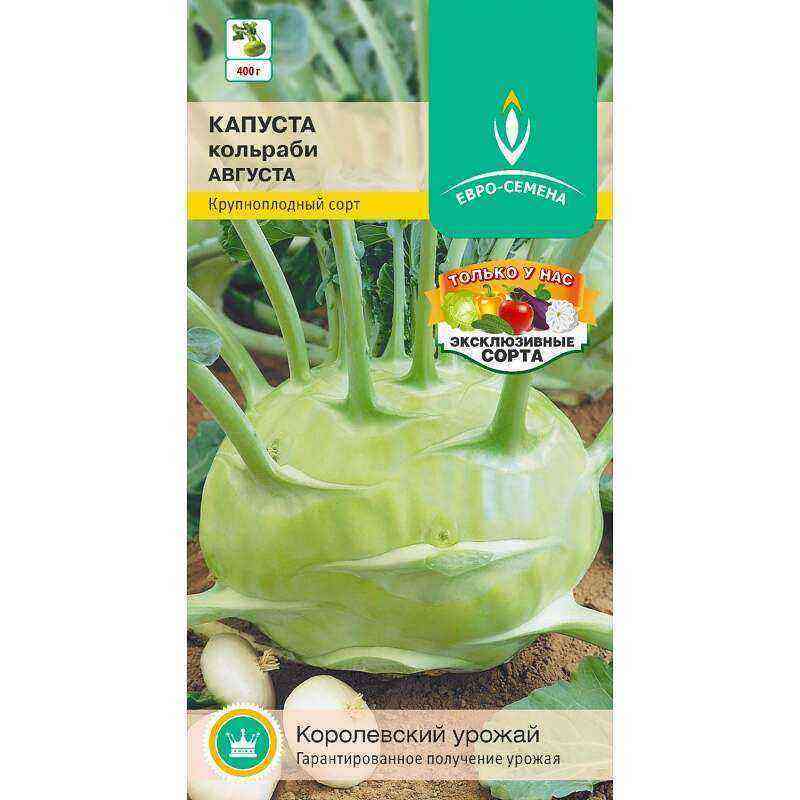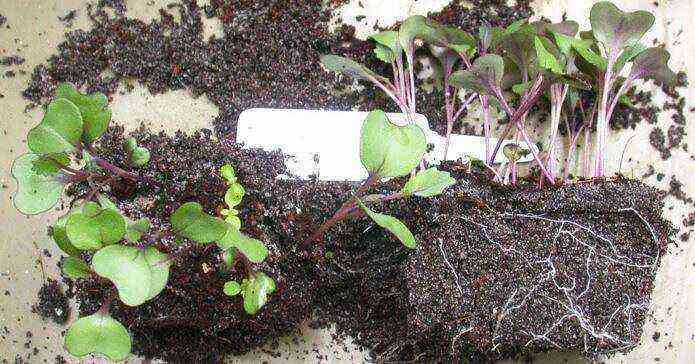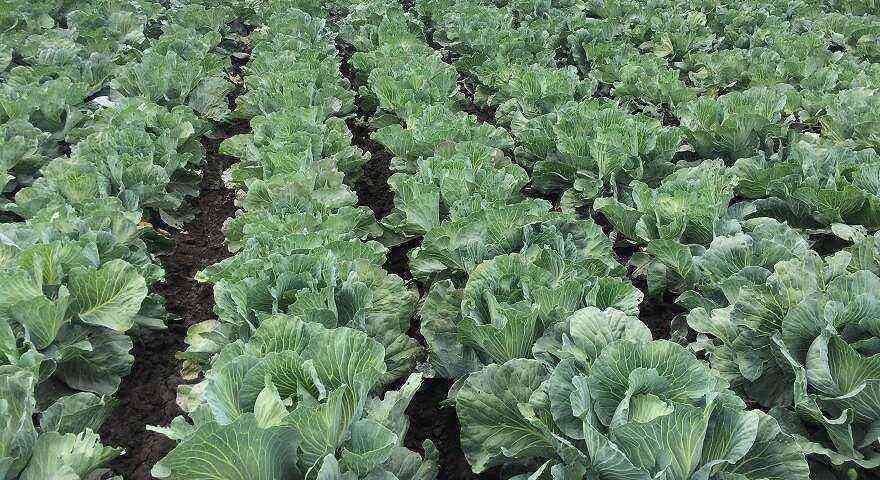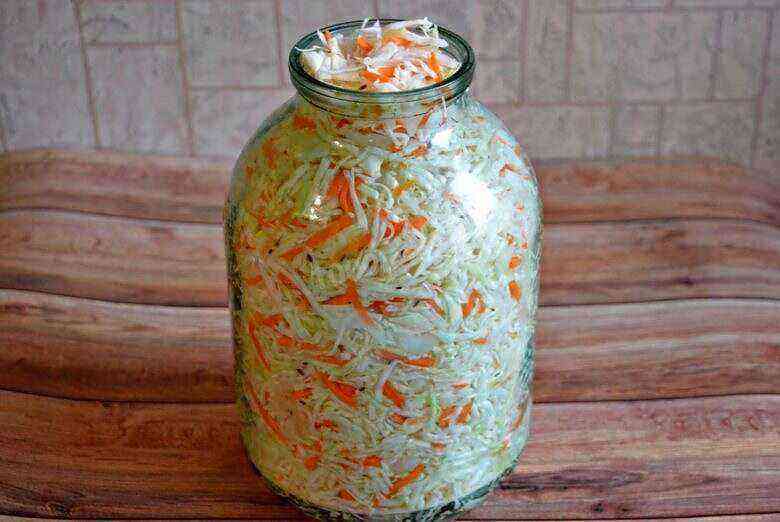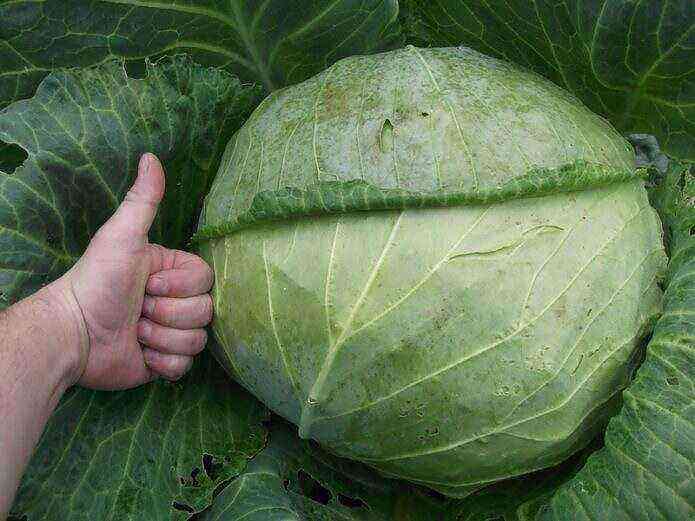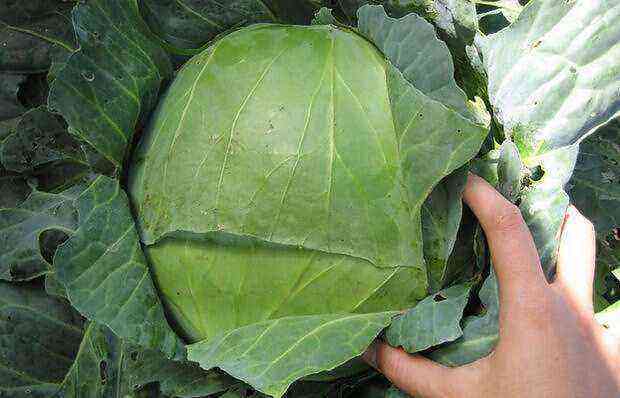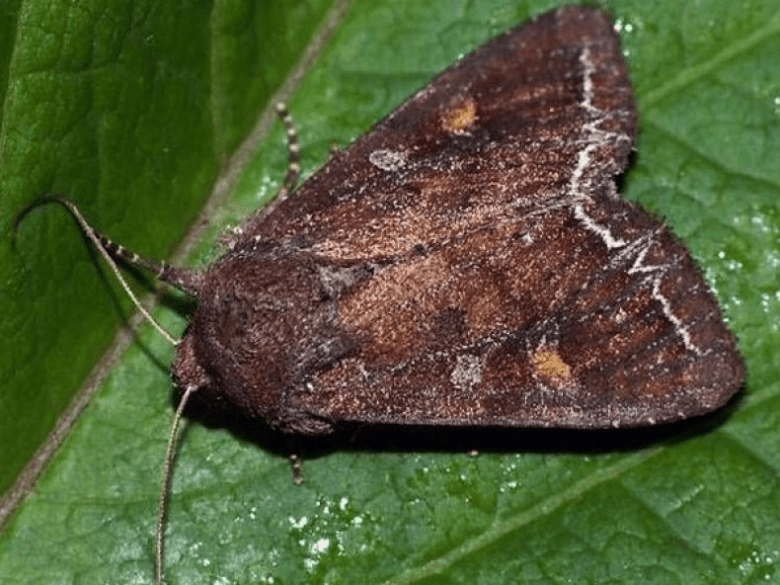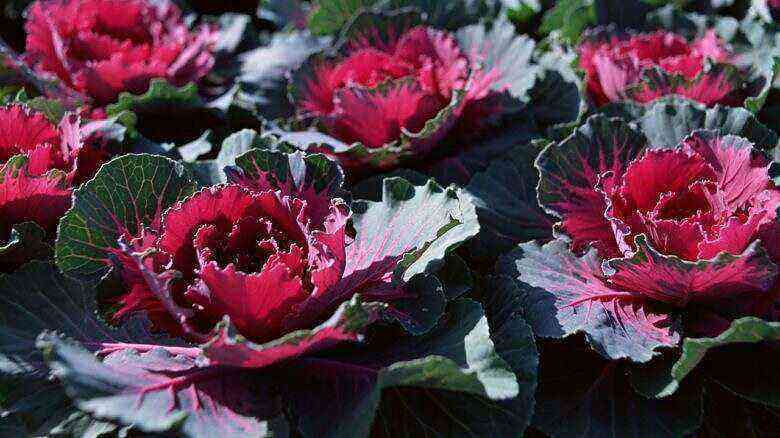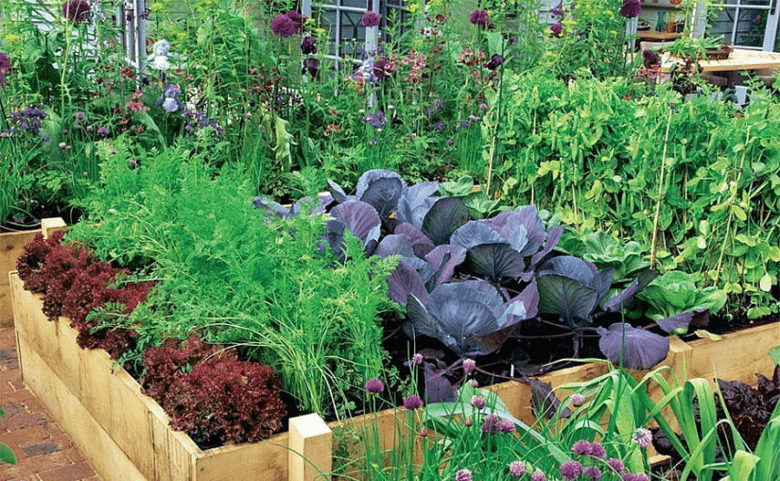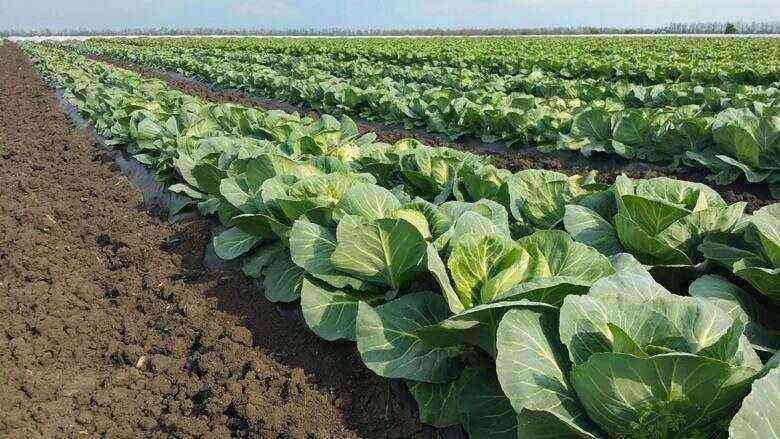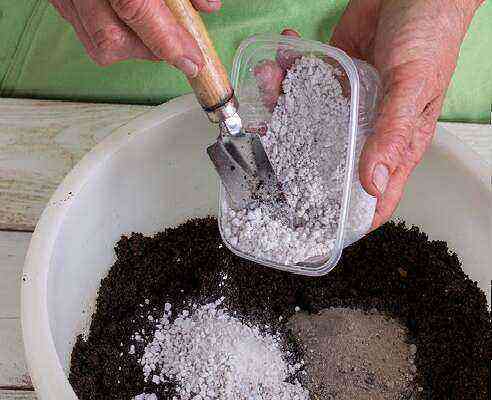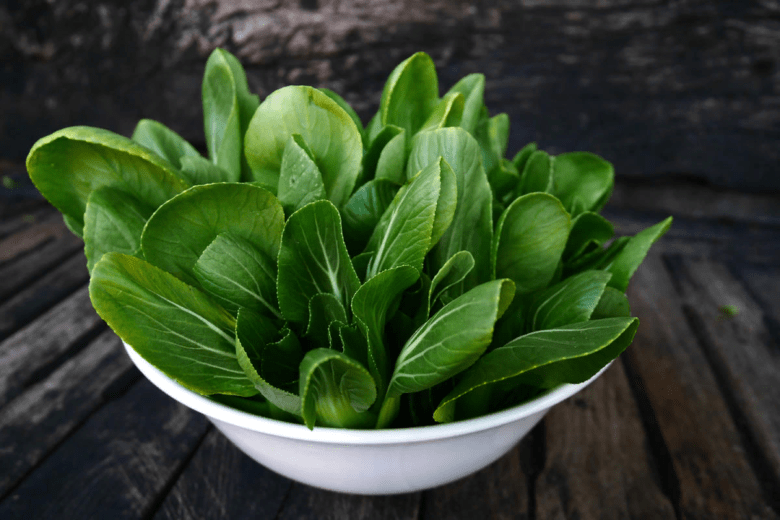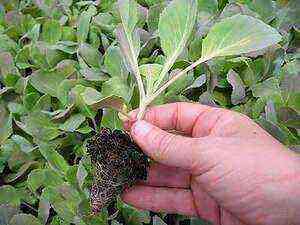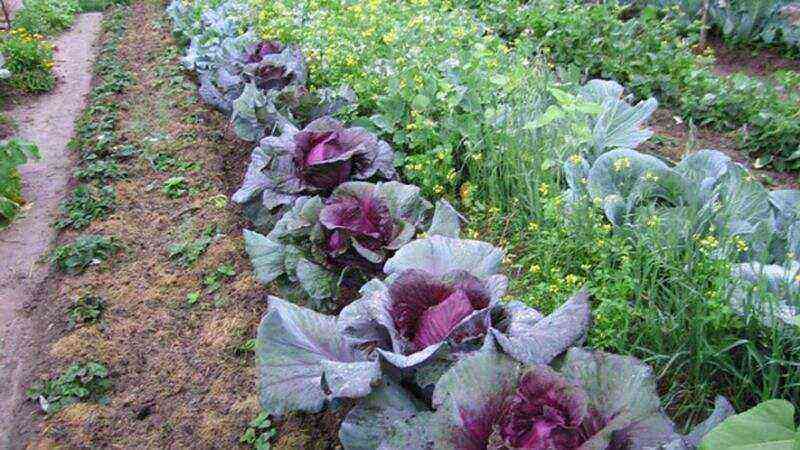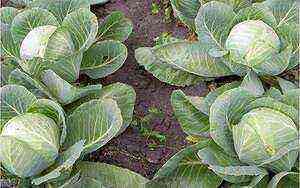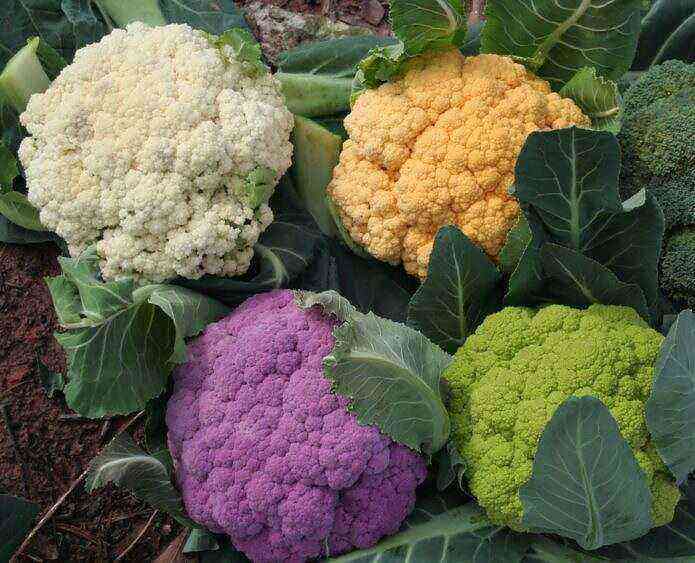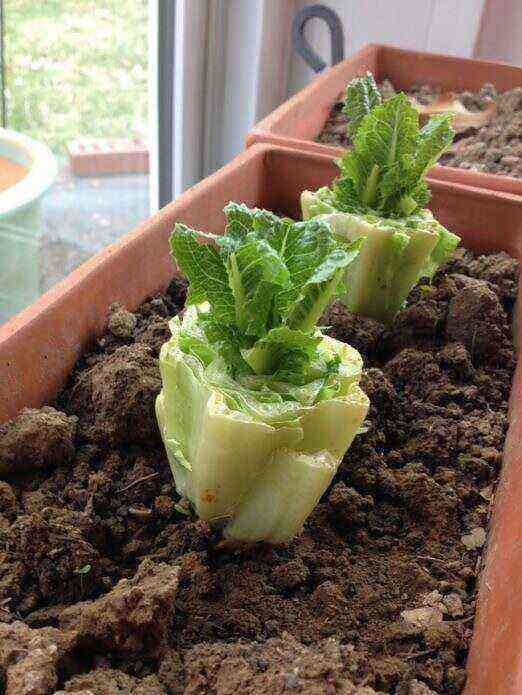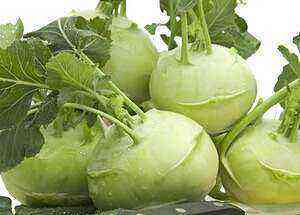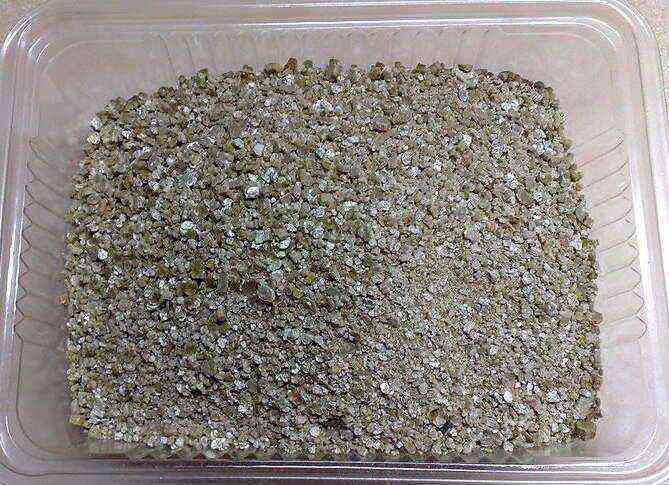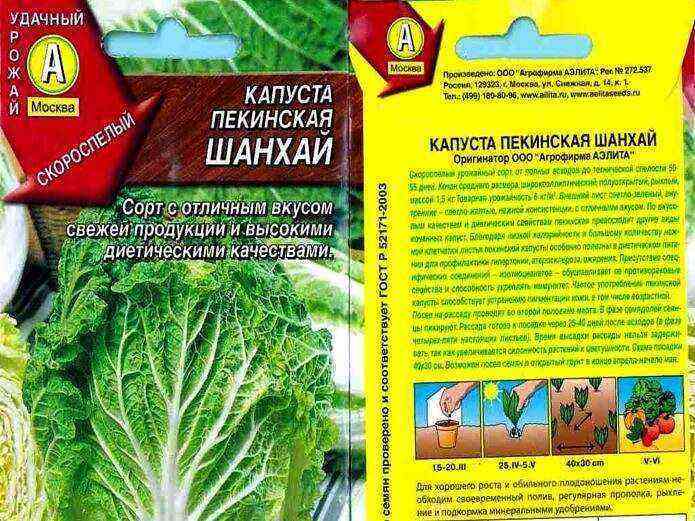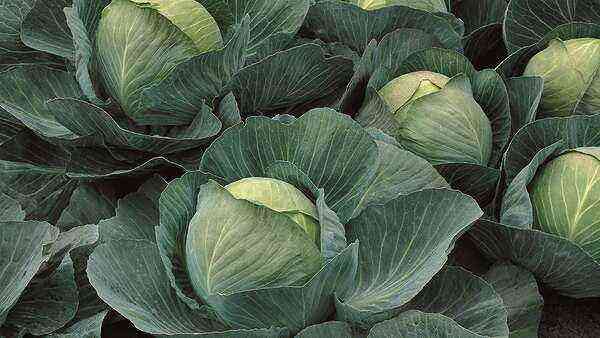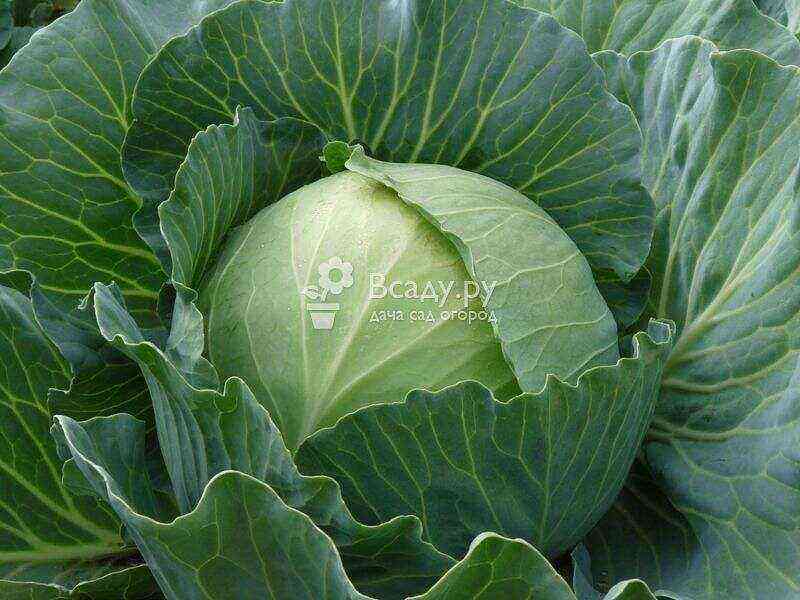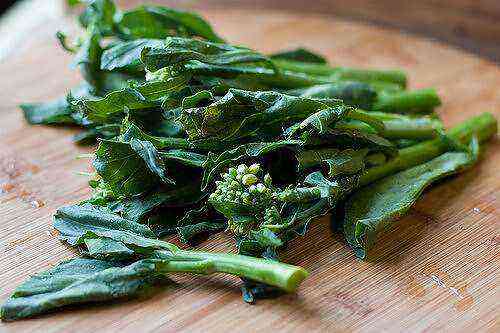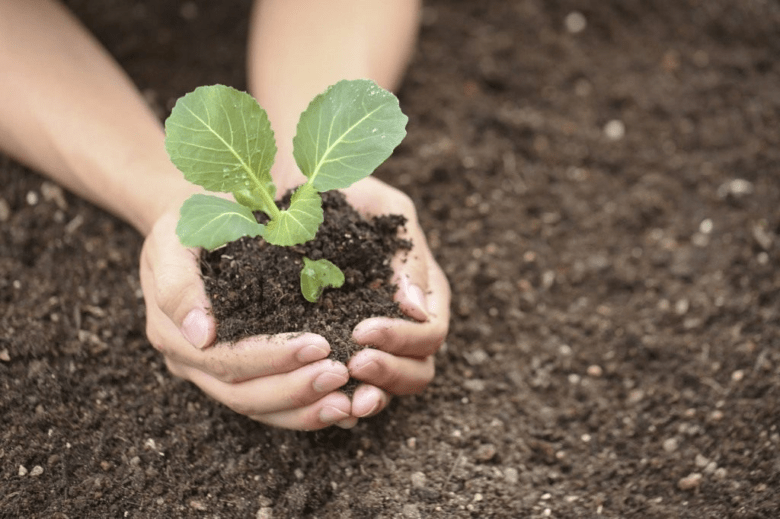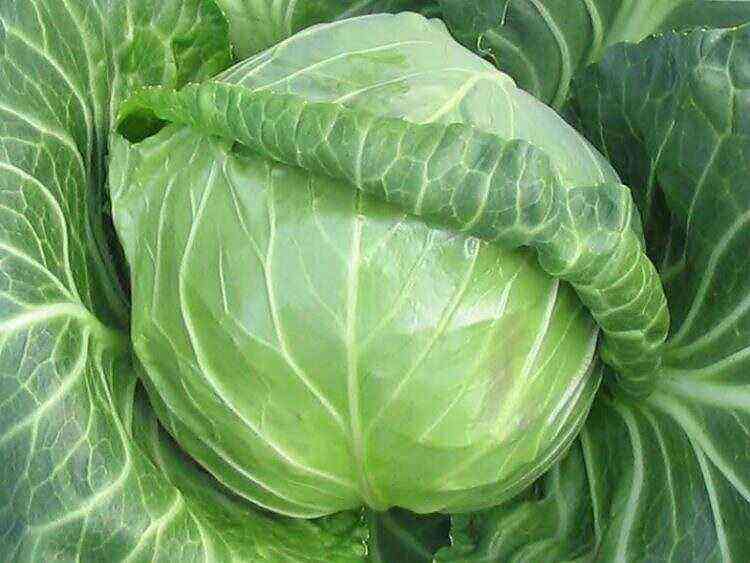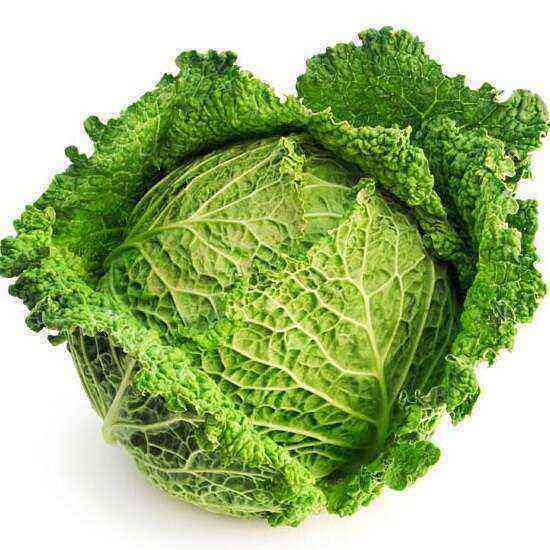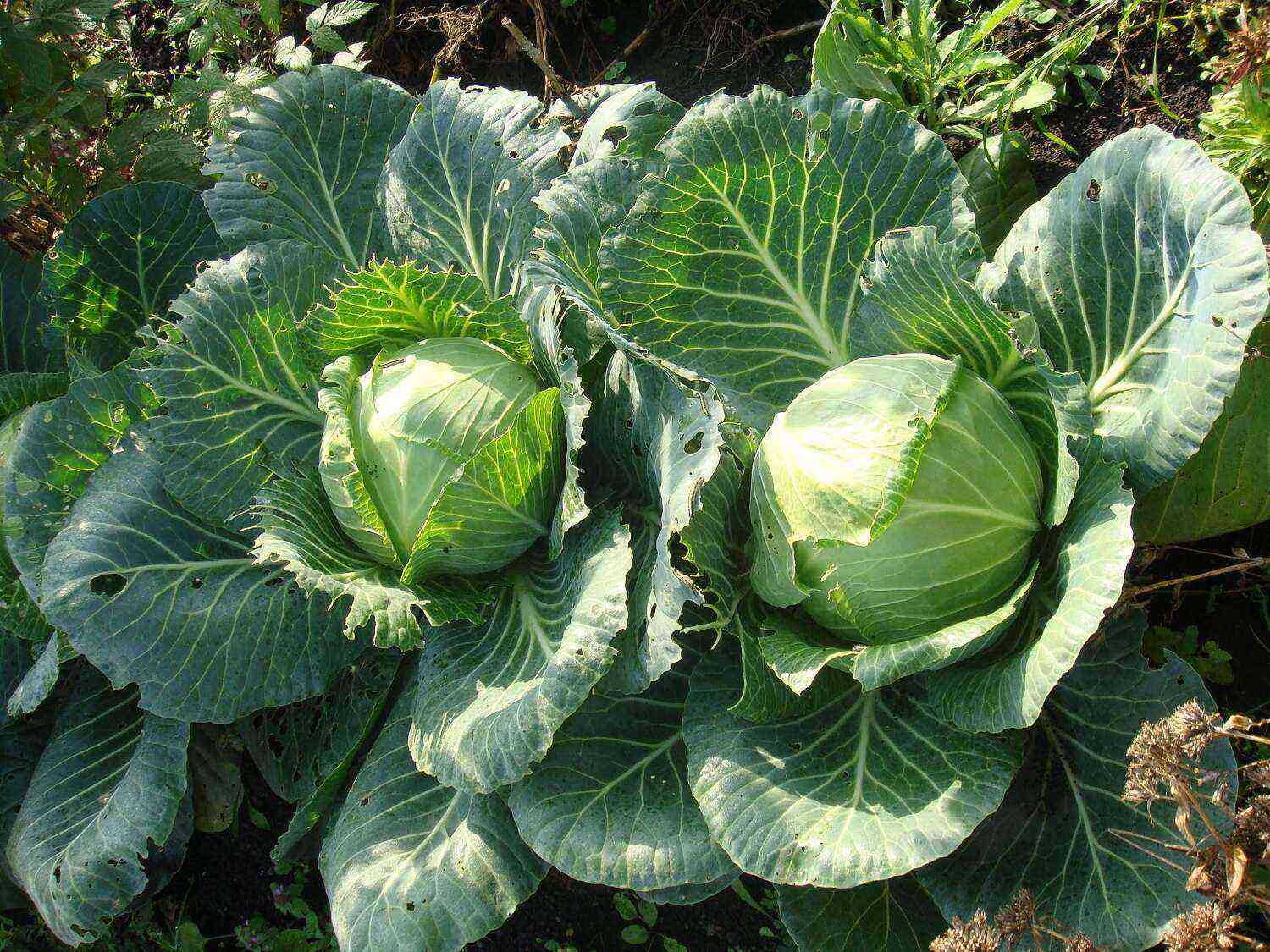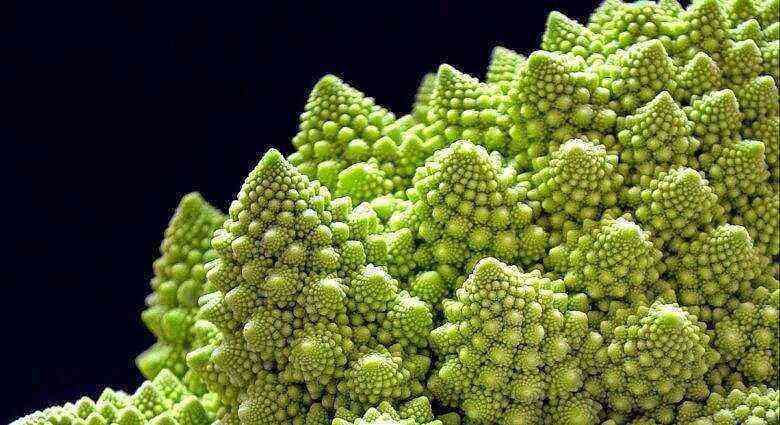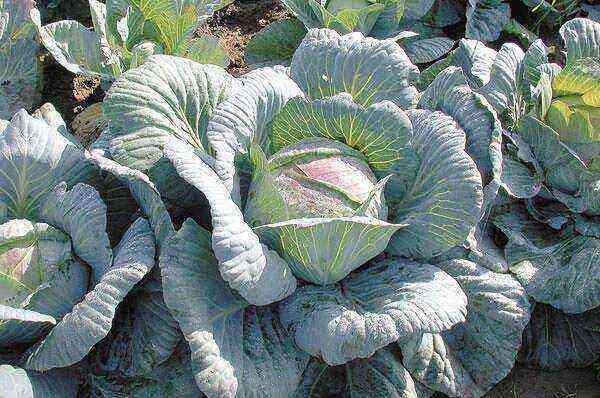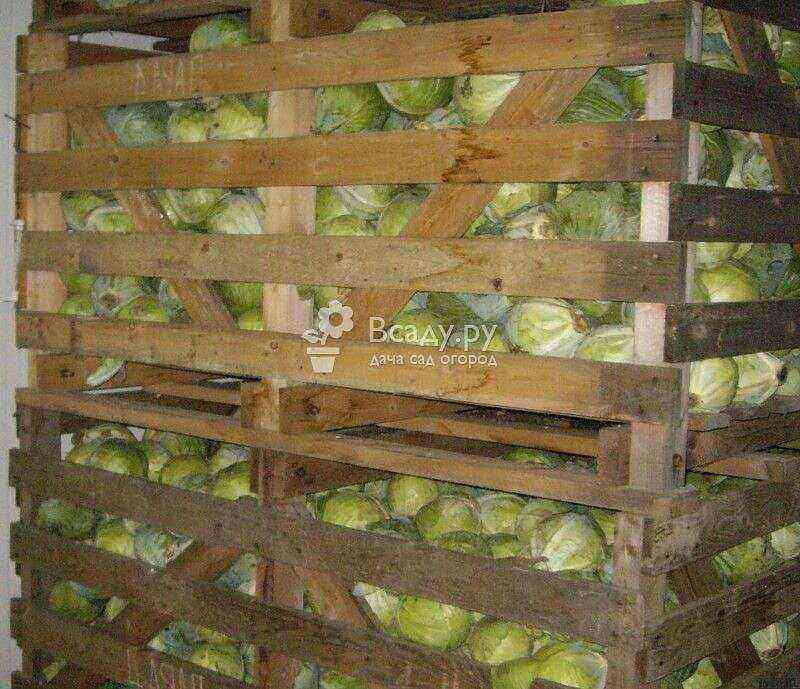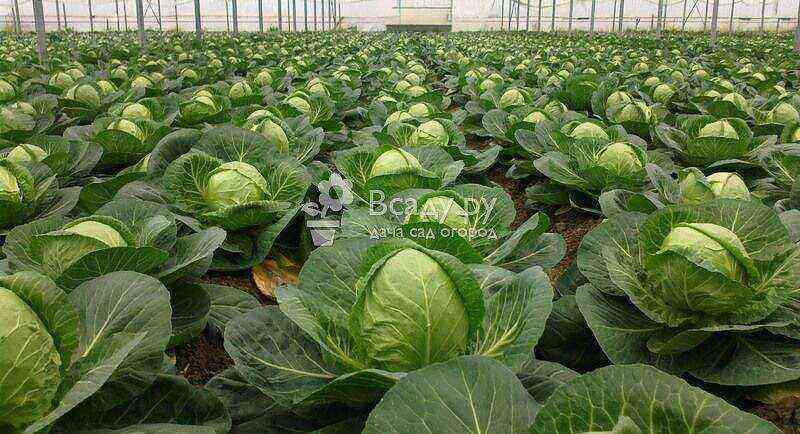Cabbage is one of the most popular and common vegetables among summer residents. Excellent taste, dietary properties and wide application in cooking make it a favorite vegetable among people. It is consumed raw, stewed, baked, salted. It contains many beneficial minerals and helps women slim down. It is quite easy to grow this vegetable in the open field, you just need to know the rules of agricultural technology and choose the right place for planting.
Cabbage precursors and planting site selection
Cabbage is very fond of bright places, choose open sunny areas for planting. Long daylight hours are required for full growth and maturation. This vegetable does not tolerate wet, wetlands. Consider this factor when planting white cabbage.
It is important to remember to choose the right neighbors and cultural predecessors.
That’s interesting. Plants with long taproots are considered to be ideal neighbors for shallow-root plants. Then there is enough food and water for both types.
Let us analyze which predecessors and neighbors of cabbage will contribute to the good growth of a green vegetable.
Good predecessors
Cucumbers, potatoes, squash, pumpkin, eggplant, peppers, carrots, turnips, legumes, onions, green manure.
Bad predecessors
Beets, any kind of cabbage, potatoes.
Good neighbors
Various aromatic herbs: dill, hyssop, oregano, thyme, mint. They repel cabbage pests. Cucumber, marigolds will also protect the fruit of the vegetable.
Bad neighbors
Spinach – there will be a struggle for moisture. Tomatoes, cabbage of other varieties, turnips, carrots, parsley, celery.
According to the rules of crop rotation, after root crops, you need to plant fruit. By alternating crops, you will preserve the nutritional value of the soil.
This vegetable is demanding not only on the planting site, but also on the quality of the soil.
Soil preparation
Growing cabbage outdoors requires certain skills. It is imperative to prepare a nutritious soil. Soil for white cabbage must have a neutral pH of at least 6.5. They check the acidity of the soil using litmus paper, which are sold in garden stores. If the acidity of the soil is higher in the country, add lime, ash or dolomite flour to it. Loamy, breathable soils are ideal. In too sandy water will drain quickly. Compost, humus and well-rotted manure are added to the soil. It is not recommended to use mineral fertilizers, especially nitrogen fertilizers, since the vegetable tends to accumulate nitrates. Therefore, it is better to apply organic fertilizers. If necessary, add some mineral elements in limited quantities. For a good harvest, you need excellent planting material, and for this you need to choose seeds.
Seed preparation
Sowing cabbage seeds
White cabbage is grown only by seeds. The seeds of this vegetable, if stored properly, can retain their germination capacity for up to 5 years. Buy seeds in specialty stores in packages. They have undergone a special treatment required before sowing and can be planted directly into the soil without soaking.
If you decide to use seeds from your site, then calibrate first. Choose the largest seeds, discard the rest. Next, we check the seeds for maturity. Prepare a saline solution, pour in the seeds and those that float up are unsuitable for planting. Rinse the rest thoroughly with clean water and dry. They will make a good harvest of cabbage. Also, such seeds require antifungal treatment. For this, seeds are placed in the solution of the drug Maxim and Fitosporin for 8-10 hours.
To check the germination, the seeds are placed in a damp cloth and placed in a warm place, after 3 days at least 90% of the seeds should hatch. This is an indicator of good quality planting material. So they can be sown in the ground.
Varieties and sowing dates
There are a lot of varieties of cabbage. But not all varieties can be grown in all regions. Cultivars that grow well in the south will not yield crops in colder climates.
When choosing varieties of this wonderful vegetable, you need to understand for what purposes you want to grow it. For fresh consumption, in the preparation of dishes, varieties and hybrids of early and medium ripening are used. For salting and long-term storage, medium-late and late varieties are needed.
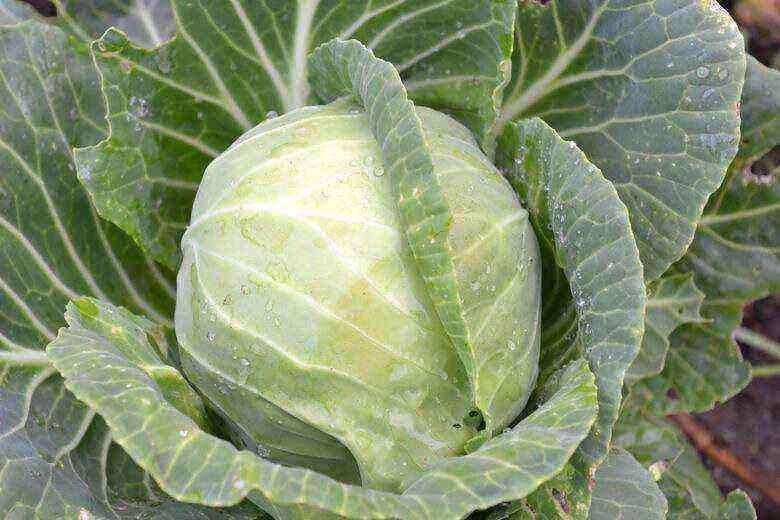 June cabbage
June cabbage
Consider the most popular varieties of cabbage.
Early grades
The June – any region of Russia is suitable for cultivation. Requires a lot of light, does not tolerate excess moisture.
Cossack F1 – early ripening hybrid. Does not require too sunny areas. The leaves are very tender for fresh consumption.
Medium-ripening varieties
Revenge Is a great hybrid. A very productive variety. After 3 months from planting, it can be eaten.
Glory 1305 – an old variety, but remains loved for its taste, ease of watering and cold resistance.
Mid-late varieties
Symphony – popular in the agro-industry. Demanding on light and watering.
Present – a very old but reliable variety. Excellent taste, long shelf life, not capricious with regard to soil.
Late varieties
Atrium F1 – great taste, high yield, disease resistant.
Aggressor – stored for a long time, excellent yield. Not capricious to growing conditions.
Cabbage is a fairly cold-resistant crop. Seedlings can survive a temperature drop of up to -5 degrees. In the southern regions, sowing cabbage in open ground begins from the end of March. Seedlings can be planted from the first half of April.
Important! Late-ripening varieties do not tolerate spring frosts well, therefore they are grown only through seedlings.
How to grow white cabbage, what rules of agricultural technology need to be taken into account, we will tell you below.
How to grow cabbage outdoors
One of the secrets of growing cabbage on the site is high-quality planting material. This green lady of the garden is planted in the ground with seeds, by direct sowing, or seedlings are grown first. In regions with cold climates, it is preferable to grow it through seedlings.
Healthy, strong seedlings are the key to a great harvest.
Growing seedlings
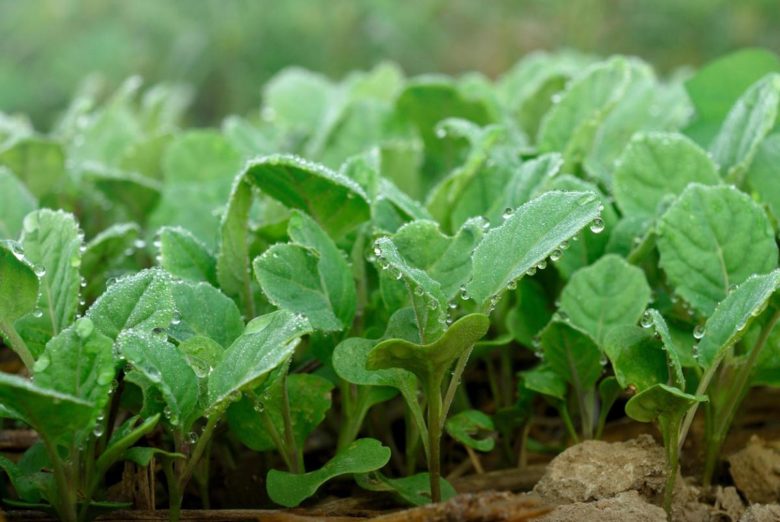 Seedling cabbage
Seedling cabbage
Cabbage seedlings in open ground can be planted quite early. She is not afraid of recurrent frosts and can withstand short-term drops in temperatures even to subzero temperatures. Cabbage seedlings are planted in the ground at the age of one and a half, two months. Based on this, sow seeds for seedlings at a time appropriate for your region. Calculate the timing, considering varieties, early or late.
Unlike seedlings of other crops, cabbage seedlings require a cool content. The temperature for growing should not exceed +15 degrees during the day and +12 degrees at night. Otherwise, the seedlings will stretch out strongly and be weak. The air humidity is not higher than 70%, at a higher humidity the seedlings can become infected with the black leg, which will lead to its death. It is extremely difficult to create such a climate in indoor conditions. Therefore, for cabbage seedlings, you need a separate room, for example, a glazed loggia or a balcony.
Cabbage seeds are sown in nutritious soil for vegetable seedlings. A pick in separate containers is carried out when a pair of true leaves appear on the seedlings. A pick is required to improve and strengthen the root system of the plant and so that the seedlings do not interfere with each other.
Watering the seedlings is very moderate, only when the topsoil dries up.
The grown and matured seedlings are transplanted into open ground when the weather conditions are favorable.
How and when to plant seedlings
 Seedlings of cabbage in the open field
Seedlings of cabbage in the open field
Cabbage seedlings are planted in open ground when it is still cool enough outside. The landing rules are pretty simple. So that young plants do not have a lot of stress during transplantation. the seedlings are hardened. To do this, it is not taken out into the air for a long time at a temperature of at least 5 degrees, accustoming it to a cool temperature and the sun. Gradually, the stay of seedlings in the open air is increased to several hours.
Important! A week before planting cabbage seedlings in the beds, they stop watering it. Immediately before planting, the seedlings are watered abundantly.
The soil for cabbage is prepared, loosened, fertilized, you can plant seedlings in the beds. Seedlings of cabbage easily tolerate transplanting. Turn the pots with seedlings, previously watered, upside down, gently crumple and the bush will fall into your hands by itself. We carefully plant it in the hole, sprinkle it with earth to the lower leaves and water it.
When planting seedlings in open ground, make sure that the rosette near the cabbage is not covered with earth, otherwise the plant will die.
This vegetable loves space and takes up a lot of space in the garden. There is a certain scheme for planting a plant in the ground. So that the plants do not interfere with each other, do not shade the heads of cabbage with leaves, late varieties are planted in rows at a distance of at least 50 cm between plants. The distance for early varieties is 25 by 40 cm.
- Seedlings early cabbage planted in open ground from early April to early May.
- Medium-ripening varieties – from mid-May to early June.
- Late cabbage – all of May.
Landing dates are adjusted for the characteristics of the region and weather conditions.
This is the timing of planting ready-made seedlings in open ground. Planting a vegetable with seeds in open ground is carried out earlier.
Growing cabbage in a seedless way
Seedless cultivation of white cabbage is practiced mainly in the southern regions. In this way, early and middle varieties are sown. The soil must be well prepared and free of weeds. Seeds are planted in 3-4 pieces to a depth of 1 cm. They are planted immediately in the place where the plant will grow and develop. In the future, one strongest seedling is left in the hole, the rest are removed.
It is believed that seed-grown cabbage is more hardy and productive.
Vegetable seeds are planted 10-20 days earlier than seedlings. This method also has its drawbacks: you need to protect fragile shoots from the vagaries of the weather and winds. And how to do it, read on.
Planting cabbage under the film
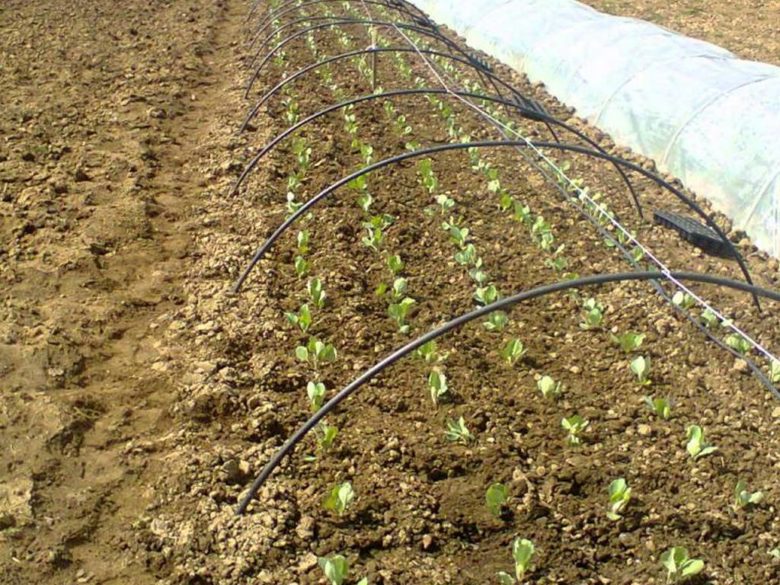 Growing cabbage under film
Growing cabbage under film
Very good results are obtained by growing cabbage under film. To protect delicate shoots from winds, cold and rains, film shelters are made. To do this, put arcs over the bed and stretch the film on top. The sun freely penetrates the plants and warms up the air and earth under the film. The temperature under the film is higher than in the open air, and the plants are protected from weather disasters. In hot sunny weather, the film is opened so that the plants do not overheat.
Important! It is advisable to ventilate the film shelters daily to remove excess moisture and reduce the temperature in greenhouses.
Such shelters can also be made of covering material, which also allows air to pass through.
There is another way to hide seedlings.
Planting cabbage under plastic bottles
 Growing cabbage under plastic bottles
Growing cabbage under plastic bottles
The technology of growing white cabbage under a plastic bottle does not differ much from the usual method of seedless cultivation. Sowing in open ground is carried out as usual, but to protect the plants, they are covered with bottles. To do this, the bottom of the plastic bottle is cut off, the rest is placed on top of the bushes or sown seeds. The bottle cap can be removed for ventilation. The bottle protects tender sprouts from wind, frost and retains moisture in the soil. The bottles are removed when the seedlings are fully matured and ready to grow outdoors.
It is not enough to plant cabbage correctly, it is also important to observe the agricultural technology of growing cabbage.
Care for cabbage
To understand how to care for cabbage outdoors, let’s take a look at what the proper care of it is. Proper care of cabbage consists of following several rules:
- timely watering;
- loosening and hilling bushes;
- protection of the soil from drying out;
- timely feeding and processing;
- preventive spraying against diseases and the destruction of crop pests.
Observing these rules, you will grow an excellent harvest in your country house without much hassle and labor costs.
Watering
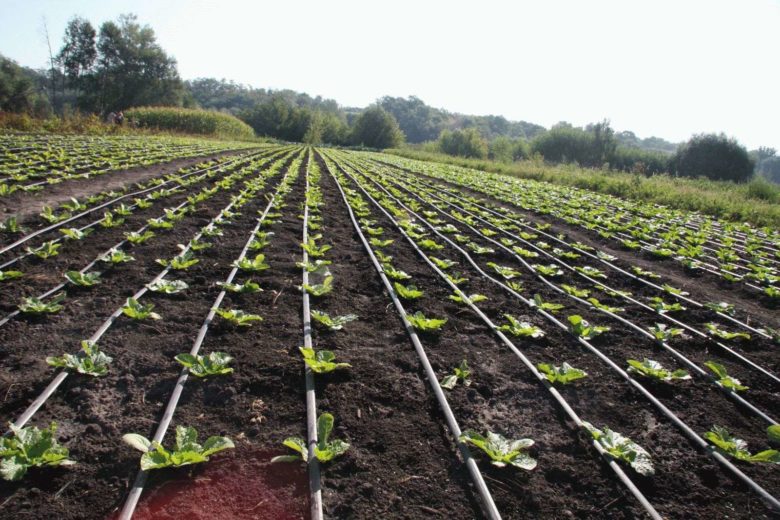 Drip irrigation of cabbage
Drip irrigation of cabbage
Ideal for plants is drip irrigation. In this way, the plant will receive the required amount of moisture and there will definitely not be an overflow of the vegetable.
But if at the dacha it is not possible to establish drip irrigation, then the soil is moistened in the usual way.
Every gardener who grows cabbage on his site should know that she loves moisture. The soil should be moist, but not too damp. She needs constant watering, otherwise she will stop developing. Water the plant at the root, do not pour water on top of the head of cabbage. If the plant does not have enough moisture, then the heads of cabbage will be tough, dry and tasteless.
Important! Watering is completely stopped two weeks before harvest so that the heads of cabbage do not crack.
And so that the soil from frequent watering does not become solid and dense, it is loosened.
Hilling and loosening
Experienced summer residents know how important loosening is for plants. Loosening helps the cabbage roots breathe, makes the soil lightweight, breathable. The soil is loosened the next day after watering. It is convenient to do this with a hoe, simultaneously ridding the soil of weeds.
Another important step in caring for cabbage is hilling. It is imperative to do this when growing this vegetable.
Hilling brings the following benefits to the plant:
- moist soil around the plant’s stem stimulates the growth of the root system;
- gives stability to the cabbage bush;
- the soil is enriched with oxygen, which promotes plant growth;
- destroys pests that lay eggs in the upper layers of the soil.
Hilling cabbage is carried out by raking only the upper layer of soil to the lower leaves of the plant, so as not to injure the roots of the cabbage.
This procedure does not require much labor and time, and the cabbage will thank the gardener with large, juicy heads of cabbage.
Important! Hilling is not done when the weather is too damp. During such a period, on the contrary, the soil is removed from the plant in order to prevent decay.
To retain moisture in the soil, soil mulching is used.
Mulching
 Mulching cabbage
Mulching cabbage
Have you ever wondered why plants survive and grow well in the forest without watering? It’s all about mulch. Mulching in the wild occurs naturally. When the leaves, the needles from the trees fall off and cover the top layer of the soil, retaining moisture in it.
Mulching not only retains moisture in the ground, but also stops weeds from growing. Natural materials used in mulching provide additional soil nutrition. The ideal mulch for cabbage is considered: hay, compost, rotted sawdust and manure. The addition of tomato tops to mulch will save the crop from cabbage whitewash, the worst vegetable pest. In hot weather, you can mulch with cut grass, but with care so that the grass does not rot and insects do not start.
Mulching simplifies crop maintenance and saves the gardener time.
Mulch the soil only when the earth is warmed up.
Mulching alone is not enough to feed cabbage; feeding this crop is necessary.
fertilizers
Conditionally, the growth process of cabbage can be divided into two stages:
- growing green mass
- head formation and growth.
Different types of dressings are needed at different stages. Experienced gardeners know how nitrogen fertilizers are necessary for the growth of the green mass of a plant. But in the case of cabbage, it’s important not to overdo it. It has the ability to accumulate nitrates and with an excess of fertilizers, this crop can become harmful to human health.
At the stage of growing a head of cabbage, a vegetable needs phosphorus and potassium fertilizers. To make the cabbage tasty, juicy with a pleasant crunch, feed it with superphosphate, potassium sulfate.
When growing edible crops, many gardeners do not use mineral fertilizers, but use only organic matter and folk remedies for plant nutrition.
Top dressing with folk remedies
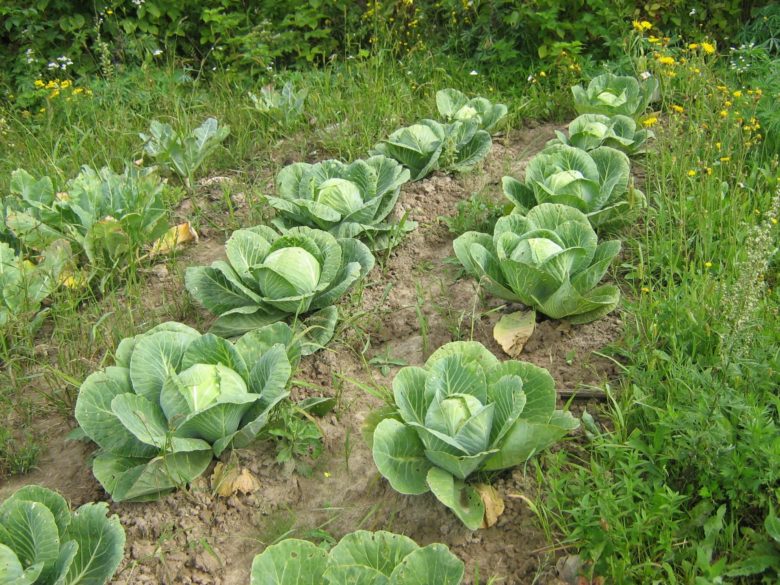 Cabbage in the garden
Cabbage in the garden
Organic fertilizers are known to every plant grower. These are cow and horse manure, bird droppings, compost (rotted plant residues). But besides this, for many years of growing vegetables, gardeners have identified folk remedies that have a positive effect on the growth and taste of cabbage. It has long been known about feeding with a solution of manure and chicken droppings, but besides this, there are also excellent means for fertilizing crops.
One of the great feedings is eggshell… Eggshells are high in calcium. For these purposes, a large amount of shells are collected, dried and pounded into powder. When planting seedlings in the ground, powder from the shell is added to the ground. In addition to calcium, the shell gives plants protection from the bear.
Hydrogen peroxide not only helps in disinfecting people, but is also useful for plants. It saturates the soil with oxygen, keeps the roots from decay. 2 tablespoons of peroxide are diluted in a bucket of water, this solution is poured or sprayed with cabbage.
Works very well on heads of cabbage boric acid, from it they become larger and tastier. Spray the cabbage when the cabbage is ripening and it will taste better.
 Ammonia
Ammonia Hydrogen peroxide
Hydrogen peroxide Baking soda
Baking soda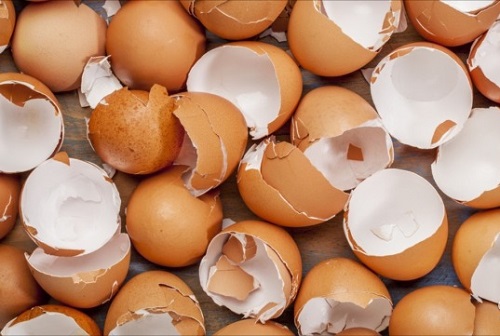 Eggshell
Eggshell
Ammonia has a pungent smell, and this repels insects. It also contains nitrogen necessary for the growth of the culture. Add 10 tablespoons of alcohol to 3 liters of water and process the bushes.
Do you like to eat bananas? Do you know how many useful trace elements are contained in banana peel? Do not discard the peel, but dry, grind and add to the soil to the plants.
usual baking soda will help the cabbage get the sodium it needs. Dissolve a tablespoon of baking soda in a bucket of water and pour or spray the vegetable bushes with this solution.
Ash, potato peelings, yeast are also excellent feeding.
The use of these inexpensive and harmless fertilizers will bring a lot of benefits to the green lady.
And some of them help control pests.
Diseases of cabbage, prevention of parasites
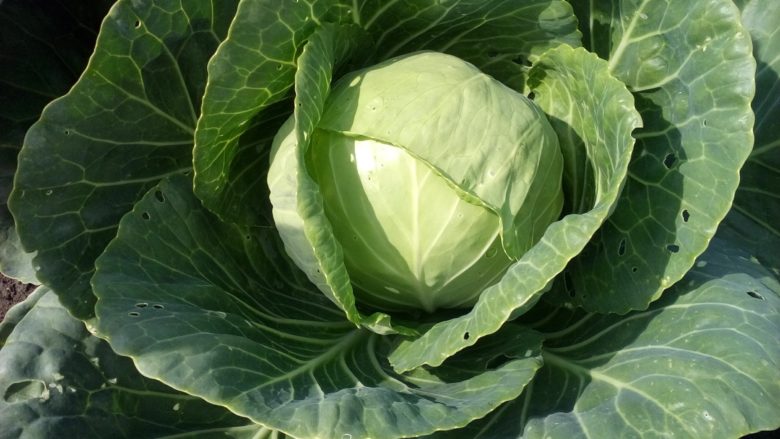 Healthy cabbage bush
Healthy cabbage bush
Why can’t you plant cabbage in one place for two years in a row? It’s all about diseases that can persist in the soil and ruin a new crop. You need to take care of cabbage in compliance with all the rules of agricultural technology, then the plants will be strong and less susceptible to diseases. But if a vegetable is sick, then urgent measures must be taken to prevent the massive spread of the disease and preserve the harvest.
The main difficulty in such a struggle is that it is undesirable to process the vegetable with pesticides at the stage of formation of the well. Cabbage accumulates chemistry in the leaves and this can be harmful to humans. Therefore, it is better to carry out preventive treatments and thus prevent crop disease.
 Harm caused by caterpillars and slugs, cabbage
Harm caused by caterpillars and slugs, cabbage
pounds – a dangerous culture disease arising from excess moisture.
The fungus that causes this disease affects the roots of the plant. Growths form on them, which prevent the roots from absorbing nutrients and nourishing the plant. Usually seedlings are susceptible to this disease, so if you notice that the leaves have begun to wither, dig out a bush and inspect the roots. Diseased plants must be destroyed. As a preventive measure, when planting seedlings, put a Glyocladin tablet in each hole. This is an antifungal not a hazardous drug.
Fusarium wilt – more dangerous for seedlings than for adult plants. But after a vegetable disease, the quality of the heads of cabbage and the yield may deteriorate greatly. Symptoms are the same as those of keels and lack of watering. Fusarium can be identified by cutting the stalk of a cabbage leaf. If a brown ring is visible on the cut, then the culture is affected by a fungus. Severely affected plants must be dug up and destroyed, and the ground must be treated with Bordeaux liquid. A decoction of hot peppers will help keep nearby plants from getting infected.
White rot – the leaves are covered with wet, slimy spots with a white fluffy bloom. Plants get sick when agricultural technology and crop rotation rules are violated. Lack of potassium and phosphorus provokes this disease. Remove damaged leaves to prevent the disease from progressing.
Phomosis or dry rot – gray spots with small black dots are formed on the leaves. To prevent the plant from getting sick, take preventive measures before planting. Add ash to each well. Treat the earth with Fitosporin, this is a natural harmless preparation. A decoction of hot peppers will also help fight fungus.
It is important to remember that weak plants are more susceptible to diseases. When buying seeds, choose disease-resistant cabbage varieties.
Pests can severely spoil the cabbage crop.
Controlling cabbage pests with simple, natural remedies
Cruciferous flea – appears in the spring on the soil. Small jumping bugs eat everything in their path. They gnaw many holes in the leaves and destroy the plant. Very harmful to seedlings. You can destroy them with Actellik.
aphid – small greenish or grayish insects. They settle on the underside of the leaves. They suck out the sap of the plant, which leads to the drying of the leaves. It is important to prevent aphids from breeding too much. You can fight it with decoctions of strong-smelling herbs, garlic, onion or tobacco.
Cabbage scoop and whitefish – green caterpillars. They eat cabbage leaves and heads. There is an effective folk remedy: Mix equal proportions of flour and baking soda and sprinkle the ground around the cabbage bush. The caterpillar will not crawl up to the plant. It will also protect the vegetable from slugs.
Useful. Plant fragrant flowers, such as marigolds, around the edges of your beds. They will scare away pests from planting. And bird insects will help destroy cabbage pests.
One of the most dangerous enemies of a vegetable is beetle larvae… They love to hibernate in manure. Therefore, when applying manure to the soil, carefully sift it so that more than one larva does not get into the garden, otherwise the crop will be destroyed.
Follow the recommendations of experienced gardeners, carry out preventive planting treatments and you will definitely have a wonderful cabbage harvest. To keep the heads of cabbage fresh for a long time, they must be properly stored.
Crop storage
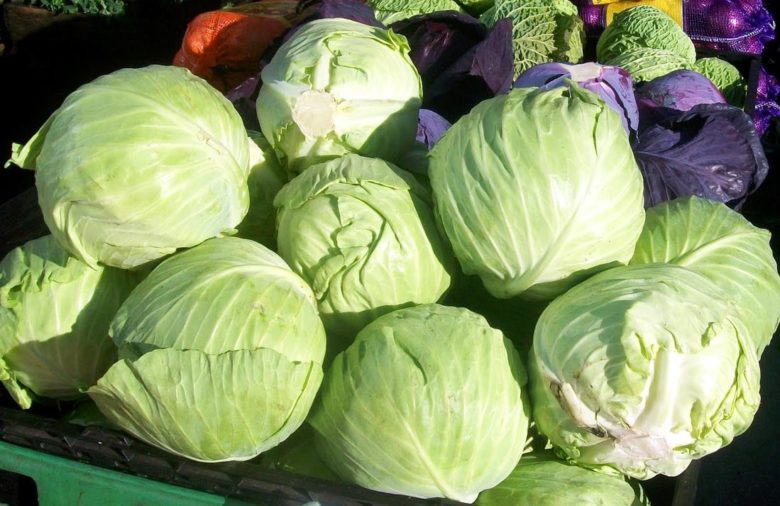 Storing cabbage heads
Storing cabbage heads
It is believed that cabbage tastes better if it gets under a little frost. Heads of late cabbage are cut when the temperature reaches -2 degrees. It is ideal to store heads of cabbage in a basement at a temperature not higher than +5 degrees and humidity 95%. With this storage, fresh cabbage will be on your table for a long time.
Cultivation of cabbage in the open ground
Tricks of growing cabbage
